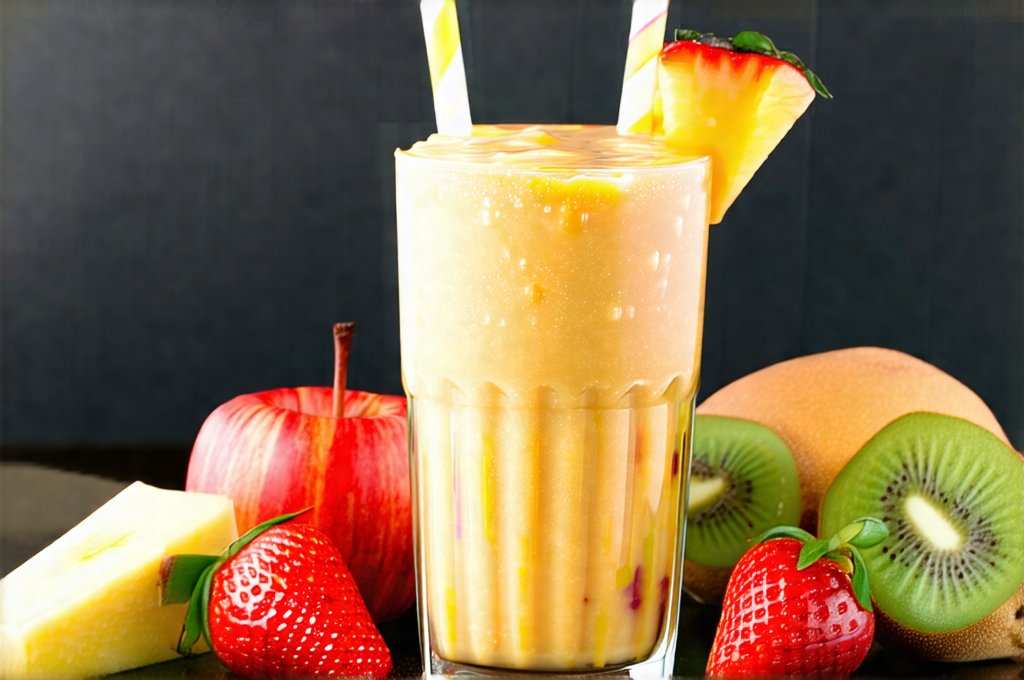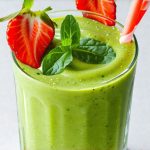The seemingly innocent act of blending fruits with dairy in smoothies – a breakfast staple for many – can often lead to unexpected discomfort: bloating, gas, and general digestive upset. While these beverages are marketed as healthy and convenient, the combination of specific ingredients can create a perfect storm within our gut, leading to what’s often referred to as “gut confusion.” This isn’t necessarily an indication of food intolerance or allergy for everyone; rather, it highlights how our digestive systems respond to complex combinations, particularly when natural sugars, lactose, and fiber are rapidly processed. Understanding why this happens is crucial for optimizing smoothie consumption and avoiding those unpleasant side effects.
The issue lies in the intricate workings of digestion. Our bodies have evolved to process foods in a certain order – breaking down carbohydrates, proteins, and fats at different rates and stages within the digestive tract. When we blend fruits with dairy, we’re essentially pre-digesting the food, bypassing some of these natural processes. This rapid breakdown can overwhelm the system, leading to incomplete digestion and fermentation by gut bacteria, which produces gas as a byproduct. Furthermore, the combination of fructose (from fruit) and lactose (from dairy), alongside fiber, creates a challenging environment for optimal absorption, increasing the likelihood of digestive distress. Understanding how the gut communicates with other systems can also shed light on these issues.
The Role of Lactose & Fructose Malabsorption
Lactose, the sugar found in milk and other dairy products, requires an enzyme called lactase to be properly broken down. Many adults experience some degree of lactose intolerance, meaning they don’t produce enough lactase to efficiently digest lactose. When undigested lactose reaches the colon, it ferments with bacteria, resulting in gas, bloating, and diarrhea. Similarly, fructose malabsorption occurs when the small intestine struggles to absorb fructose effectively. Fruits are naturally high in fructose, and combining this with dairy can exacerbate the issue, especially for those already prone to fructose sensitivity. This leads to a build-up of undigested sugars in the gut, triggering similar symptoms as lactose intolerance.
The problem isn’t necessarily that people can’t tolerate either sugar; it’s about the quantity and speed of digestion. Blending dramatically increases the surface area exposed to digestive enzymes, accelerating absorption. This rapid influx can overwhelm the system’s capacity, even in individuals who typically handle small amounts of lactose or fructose without issue. Adding dairy to a fruit smoothie essentially delivers a concentrated dose of both sugars simultaneously, increasing the potential for malabsorption and subsequent discomfort. It’s also important to remember that different fruits have varying levels of fructose content; apples and mangoes are higher than berries, for example. Gut health can significantly influence how we process sugars.
Fiber’s Double-Edged Sword
Fiber is undeniably beneficial for overall health, promoting regularity and feeding beneficial gut bacteria. However, in the context of blended smoothies, fiber can contribute to bloating if not managed carefully. When fruits and vegetables are blended, the cell walls are broken down, releasing fiber more rapidly than when consumed whole. This rapid release can overwhelm the digestive system’s ability to process it efficiently, leading to gas production as bacteria ferment undigested fibers in the colon. – Consider including a source of healthy fat (like avocado or nut butter) alongside fiber to slow digestion and improve absorption. – Pairing high-fiber fruits with fermented foods containing probiotics can also aid digestion. – Smaller portions are often better when incorporating blended fiber sources.
The type of fiber also matters. Insoluble fiber, found in fruit peels and some vegetables, adds bulk to stool but isn’t readily digestible. Soluble fiber, present in many fruits and oats, dissolves in water to form a gel-like substance, slowing digestion and helping regulate blood sugar levels. A balance between both types is ideal, but excessively relying on soluble fiber without adequate hydration can also contribute to bloating as it absorbs water from the intestines. This highlights the importance of staying well-hydrated when consuming high-fiber smoothies.
The Gut Microbiome Connection
Our gut microbiome – the trillions of bacteria residing in our digestive tract – plays a pivotal role in how we digest food and maintain overall health. Introducing a sudden influx of sugars, particularly fructose and lactose, can disrupt this delicate ecosystem. When undigested sugars reach the colon, they become a feast for certain types of bacteria, leading to an imbalance known as dysbiosis. This imbalance can cause increased gas production, inflammation, and altered gut motility – all contributing to bloating and discomfort. – A diverse diet rich in whole foods is crucial for fostering a healthy microbiome. – Incorporating fermented foods (yogurt, kefir, sauerkraut) provides beneficial probiotics that support digestive health. – Avoiding excessive sugar intake helps prevent the overgrowth of harmful bacteria. This can also contribute to brain fog.
The key takeaway here isn’t necessarily to eliminate smoothies altogether but rather to understand how their composition affects your individual gut health and adjust accordingly. Paying attention to ingredient combinations, portion sizes, and hydration levels can significantly reduce the risk of bloating and ensure you reap the nutritional benefits without the unpleasant side effects.
Strategies for Bloat-Free Smoothies
Ultimately, minimizing smoothie-induced bloating comes down to mindful blending practices. Here are a few strategies to consider: – Choose low-fructose fruits: Berries (strawberries, blueberries, raspberries) generally have lower fructose levels than apples, mangoes, or pears. – Opt for lactose-free alternatives: Almond milk, coconut milk, oat milk, or even water can replace dairy without triggering lactose intolerance symptoms. – Incorporate healthy fats: Adding a tablespoon of avocado, nut butter, flaxseeds, or chia seeds slows down digestion and improves nutrient absorption. – Balance fiber intake: Don’t overload your smoothie with excessive amounts of fibrous fruits and vegetables. – Stay hydrated: Drink plenty of water throughout the day to help move food through the digestive system efficiently.
Beyond ingredient choices, consider how you blend your smoothies. Blending on a lower speed can preserve some of the fiber structure, slowing down digestion compared to high-speed blending which completely breaks down cell walls. Additionally, chewing your smoothie (yes, it sounds strange!) can initiate the digestive process in your mouth, reducing the burden on your gut. Finally, pay attention to your body’s signals. If a particular ingredient consistently causes bloating, eliminate it from your smoothies and experiment with alternatives until you find a combination that works for you.
Listening To Your Body & Individual Tolerance
Everyone’s digestive system is unique. What causes bloating in one person might not affect another. The key to finding the perfect smoothie recipe lies in listening to your body and observing how different ingredients impact your digestion. Keep a food diary to track what you’re consuming and any associated symptoms. This can help identify specific triggers and tailor your smoothies to suit your individual needs. – Start with simple recipes containing only a few ingredients. – Gradually introduce new ingredients one at a time, monitoring for any adverse reactions. – Pay attention to portion sizes; even healthy foods can cause bloating if consumed in excess.
Don’t fall into the trap of believing that “healthy” automatically equates to “digestible.” The nutritional benefits of smoothies are undeniable, but they must be balanced with mindful preparation and a keen awareness of your body’s response. By understanding the potential causes of smoothie-induced bloating and implementing these strategies, you can enjoy this convenient and nutritious beverage without compromising your digestive comfort. Sometimes imaging is necessary to help diagnose underlying issues.
How The Gut Affects Motivation
It’s also important to remember that gut health can affect more than just digestion; it can even influence your energy levels and motivation. The gut plays a significant role in regulating mood, energy, and overall well-being.


















